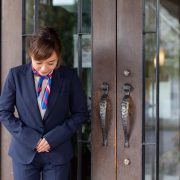Hourensou: Japanese Business Practices

I still remember my hectic first day of working in Japan. I was almost late because I got on the wrong train. Luckily, I left the house early which bought me some time to ask around for instructions. Just as I arrived at the office, my stomach started acting up. You see, I ate raw fish delicacies for the first time the night before, which proved to be a bad idea. To make things worse, I also spilled some orange juice on my white shirt. To make it short, my morning was off to a rocky start.
But by some strange twist of fate, I managed to turn the day around. How? Well, weeks prior, I had some of my friends teach me about hourensou. They were adamant about lecturing me on everything hourensou as it is essentially the Japanese system of conducting business, especially in communication. Apparently, I impressed my co-workers and even some of the superiors, as they would tell me years later.
The funny thing is, at that time, I thought they were disappointed in me because I looked like such a klutz. My hair was all messed up and my body was covered with sweat to go along with the orange stains that ruined my shirt. But no, they weren’t bothered by my appearance because I made up for it using hourensou. I have to give credit to some of my buddies for helping me out. That first day would have been awful if it weren’t for them.
As a way of giving back, I’ll share with you what I have learned. Hopefully, these tips can help you as well. Enjoy!
Look the Part

The first advice my friends told me was that I should always need to look slick, clean, and formal. I had no problem doing this since I regularly wore business attire back in my home country to maintain a clean look. I’ll gladly share with you what my usual attires look like. I’ll just forego what I wore for my initial day because up until now, I still haven’t forgiven the orange juice for ruining my outfit.
To start with, I usually keep my hair short and I never forget to shave every morning. I always wear a white or blue ironed shirt or long sleeves, slacks, dark suits, simple ties, and Oxford shoes. To top it all off, I wear classy leather watches. To avoid sweating heavily during the summer, I don’t wear suit jackets but I’ll wear shirt-stays beneath my trousers to keep my long sleeves looking neat.
Based on what I see from my female co-workers, women always keep their hair arranged and they don’t wear too much makeup. Aside from that, they also wear nice perfume. They keep their attire straightforward, wearing a white blouse or shirt underneath a dark blazer, skirts or pants, and simple shoes. What is interesting to note about the ladies’ attires is that no one seems to really wear fancy jewelry in the office, just a watch and a pair of earrings.
Proper Greetings

The next thing my pals told me to keep in mind was how to greet someone properly, especially towards my seniors. Doing so could earn me some respect points in the office for studying and recognizing the Japanese culture.
They told me to memorize lines like ohayou gozaimasu (good morning), konnichiwa (good afternoon), arigato gozaimashita (thank you), osaki ni shitsureishimasu (apologies for leaving before you), and otsukaresama desu (thank you for your hard work), which are all commonly used phrases in offices.
They also mentioned that bowing is more than just a greeting towards another individual, it also a sign of respect and decency towards the ones who have paved the way. My buddies told me that there is a specific way of bowing for juniors such as myself at the time. They said that I should keep my arms by my side and bow halfway towards the waist.But bowing is not just done in the workplace, it’s an integral part of Japanese life. So even if you won’t be working in Japan, it’s important to be aware of this to show respect and awareness towards the local culture.
You should also say “-san” after your workmates’ names when you are interacting with them. It’s equivalent to the western “Mr.” and “Ms.” But you should never put “-san” on their last names when you are referring to or talking about them in front of a client or customer. You should instead apply uchino to their names. Uchino means “of our company”.
Know Your Place

My friends were very serious about the importance of knowing the company hierarchy. They told me that I should figure out who the big bosses and my seniors are, as well as the people who are on the same level as I am, so as not to offend anyone especially high-ranking individuals.
Japanese people are known to be very particular with the people they want to talk to within the company. Usually, they would want to converse with others at a similar level. So as a junior or newcomer, you can’t act all “buddy-buddy” towards the CEO, President, or any of the higher-ups.
Additionally, when headed towards a meeting along with your seniors and other high ranking people, you should avoid walking alongside them as this may be seen as disrespectful. Instead, follow them from the back — a simple homage to how you are still in the process of following their footsteps.
If you are headed for lunch and some of your co-workers are still working, you should invite them to go with you, especially your seniors. If they tell you that they will be joining you, wait for them to finish. And if you’ll be working in an office that has elevators, make sure to be the one who operates it and also make sure that your seniors get in and out before you.
Get Busy With Business Cards

Back in my home country, I rarely gave out my business cards. Clients and customers would just typically ask for my number and I would give it to them in person. Some of the big businesses conducted in a very formal manner and they were the only ones who would deduct my card supply.
But here, companies consider business cards as essentials. During meetings, the Japanese exchange cards before they begin. The business cards allow individuals to get a background of who they are interacting with, as business cards contain information such as a person’s name, position or rank, and the name of the company.
I remember my first time getting my cards made, I had 1,000 made and they ran out quickly. That had me puzzled at first, but I realized that our company was engaging in multiple meetings every single day and I would always give each member of the other company a business card. So it’s best to be prepared with your business cards, as most frown upon being underprepared with details as tiny as cards.
When handing out cards, you should present and receive cards with both hands, bow after the exchange, and take time to read the contents of the card before you place it on the table or in your bag.
Conclusion
I was lucky to have my friends support me with tips like the ones I mentioned above. These were very instrumental in my development as a professional here in Japan. Being able to use the things that I learned really made me extremely proud of myself, so I wrote this article as a way of giving back to aspirants who have the same dreams that I had a few years back.
We hope this article will be of help to you. And don’t forget to look decent, be aware of the culture, and be respectful towards everybody in the company. And lastly, don’t drink orange juice on your first day! Until next time. Too-da-loo!
Motto Japan, the community platform to support foreigners with the foundation for life in Japan, including Japanese study, job opportunities, and housing service. Motto Japan Media will provide a wide variety of information for Japanese fans all over the world, to create a cross-cultural environment and enrich the life of foreign residents in Japan!













Leave a Reply